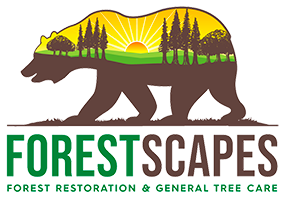15% off Tree Trimming & Removal until Feb. 1, 2026! Call us today to schedule your service!
Wildfires are a growing concern, not only for the immediate threat of fire but also for the hidden dangers they bring, such as asbestos exposure. Structures built before the 1980s, when asbestos was commonly used in construction, are particularly vulnerable. When these buildings catch fire, asbestos products can be damaged, releasing carcinogenic fibers into the air, which are then carried by smoke, posing a significant health risk.
The Scope of Wildfires in the U.S.
According to the Congressional Research Service, an average of 67,000 wildfires occur each year in the United States, burning approximately 7 million acres annually. In 2018, over 58,000 wildfires burned nearly 9 million acres across the nation.
Most Affected Areas
Wildfires can happen anywhere, but they are most prevalent in certain areas:
- Western States: Fires here are typically larger and burn more acreage, with states like California, Arizona, and Montana among the most affected.
In 2018, 87% of the acreage burned in the East was nonfederal land, while 63% of the acreage in the West was on federal land, including national forests and parks.
Asbestos Exposure Prevention Tips
When wildfires threaten, it’s crucial to prioritize safety and take steps to minimize asbestos exposure. Here are some essential tips:
- Immediate Actions:
- Evacuate immediately if instructed.
- Use community evacuation routes.
- Wear an N-100 or P-100 respirator mask to filter out asbestos fibers.
- Home Safety Measures:
- Designate a room to be sealed from outside air.
- Use portable air cleaners or purifiers to maintain indoor air quality.
- Stay indoors in a safe location if not ordered to evacuate.
- After the Fire:
- Wet down possible asbestos-containing materials before handling.
- Wear NIOSH-approved N-100 or P-100 masks.
- Seal immobile materials with plastic sheeting and duct tape.
- Clean with a HEPA vacuum and wet wipes.
- Double-bag all debris.
- Avoid moving damaged construction materials unless necessary.
- Seek professional help for large quantities of asbestos materials.
Cleaning Up After a Wildfire
Cleaning up after a wildfire requires careful handling of potential asbestos materials to avoid releasing fibers into the air. Here are some guidelines:
- Use water to wet down materials before handling.
- Always wear a NIOSH-approved N-100 or P-100 mask.
- Seal non-movable materials with plastic sheeting and duct tape.
- Use HEPA vacuums and wet wipes to clean.
- Double-bag all debris.
- Consult with asbestos abatement professionals if large quantities of asbestos are involved
Source: https://www.asbestos.com/asbestos/natural-disasters/

